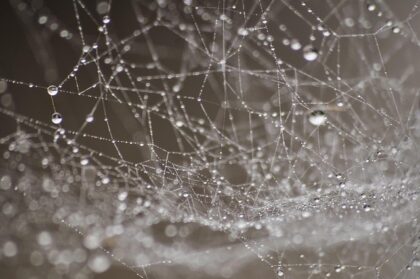by Laura K Secor

Hello My Friends,
When I left you in March, we contrasted a Catholic view of heritage with a Zen view. My Catholic friend described his feeling of being in a line of inheritance with the humans whose genes he shared through direct descent. That felt very narrow to me, and left out my feelings of belonging to a much larger world. Looking for another perspective, I discovered – and shared with you – Thich Nhat Hanh’s belief that we are all connected to the clouds and the rain and the little flowers. It was a beautiful passage, which you can read in the prior Nugget, very poetic. The rain says hello on its way to the ground, then nurtures the flower which grows up to wave at us as we walk past. Isn’t that charming? But honestly, hard to relate to. I understand on some intellectual level that my atoms are the same atoms that make up the raindrops, and that my biological systems are cousin to those of the plant. But I’m not sure that I have an emotional sense of kinship such as I might share with a chimpanzee or my cat.
I continued to read, looking for kindred spirits, and I found Donna Haraway, who wrote Staying with the Trouble. She tells us – “Nothing is connected to everything; everything is connected to something.” Is this idea on opposition to Thich Nhat Hanh? Not exactly – it’s an elaboration. She is in dialogue with Thom Van Dooren, whom I quote from his book Flight Ways: “The brand of holist ecological philosophy that emphasizes that ‘everything is connected to everything’ will not help us here. Rather, everything is connected to something, which is connected to something else. While we may all ultimately be connected to one another, the specificity and proximity of connections matters – who we are bound up with and in what ways. Life and death happen inside these relationships. And so, we need to understand how particular human communities, as well as those of other living beings, are entangled.”
Let me repeat – “while we may all ultimately be connected to one another, the specificity and proximity of connections matters.”
So many ways of being connected – the community of found family, the community of office co-workers, the community of a zoo or a Manhattan apartment building. The community you might feel walking a stretch of the Appalachian trail, or shopping at Best Buy on a Sunday afternoon. The community Neil Armstrong felt when he looked down at the glorious blue marble that is our planet. The communities that have nothing to do with humans, such as a murmuration of starlings or the animals who meet at a watering hole in one of the rare unclaimed stretches of African savannah. The nets or hyphae of mushrooms webbed beneath a grove of trees, the bats living in a remote cave in a cliff.
But I haven’t gone far enough. Donna Haraway says, “The worlds we live in are not containers; they are patternings, risky co-makings, speculative fabulations.” In other words, the old ideas of “community” don’t go far enough to help us approach the world we now live in. We need some radically new thoughts to help us see our world(s) in new ways. I’m a little baffled, honestly. What sorts of new ways does she mean? She provides a delightful example:
“The tentacular are not disembodied figures; they are cnidarians, spiders, fingery beings like humans and racoons, squid, jellyfish, neural extravaganzas, fibrous entities, flagellated beings, myofibril braids, matted and felted microbial and fungal tangles, probing creepers, swelling roots, reaching and climbing tendrilled ones. The tentacular are also nets and networks, IT critters, in and out of clouds. Tentacularity is about life lived along lines – and such a wealth of lines – not at points, not in spheres.”
I think I get it. Points and spheres imply closed systems. The trick is to navigate the middle ground. On the one hand, we have the closed systems of people who only connect to genetically close humans. And on the other hand, we have the completely open systems of people who say “everything is connected to everything,” leaving us nowhere solid to stand. What are the new ways of thinking? To find networks and webs of proximity in many senses of the word. Proximity in space, or through gene-lines, or through the impact one has on another, or proximity of habit or use of resources. Networks can exist in so many different modes of thought. The key is to investigate paths of connection, paths of interaction. Cause and effect, proximity of needs or goods. Proximity of understanding, or even sympathy.
Donna implores us – “The task is to make kin in lines of inventive connection as a practice of learning to live and die well with each other in the present… In fact, staying with the trouble requires learning to be truly present, not as a vanishing pivot between awful or Edenic pasts and apocalyptic or salvific futures, but as mortal critters entwined in myriad unfinished configurations of places, times, matters, meanings.”
